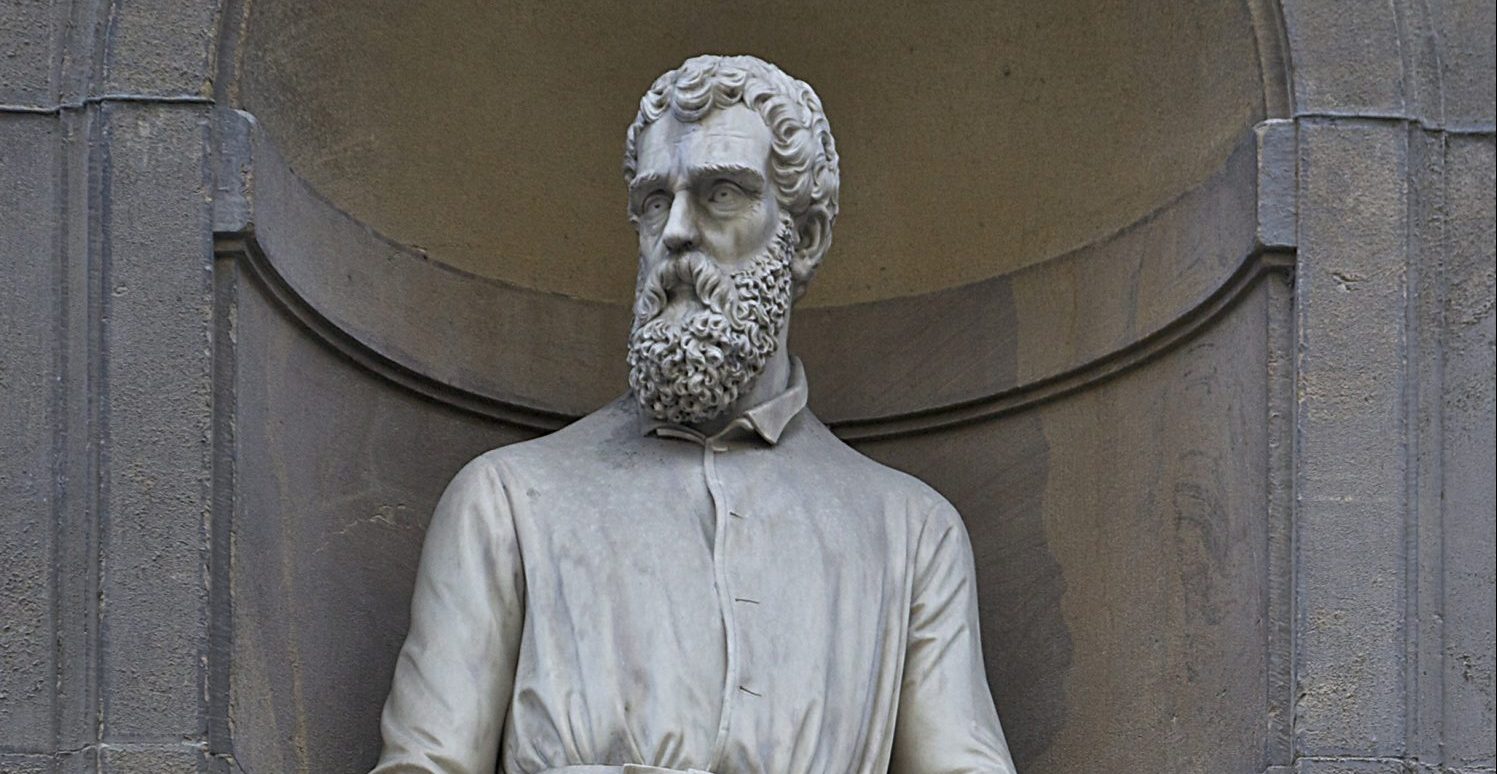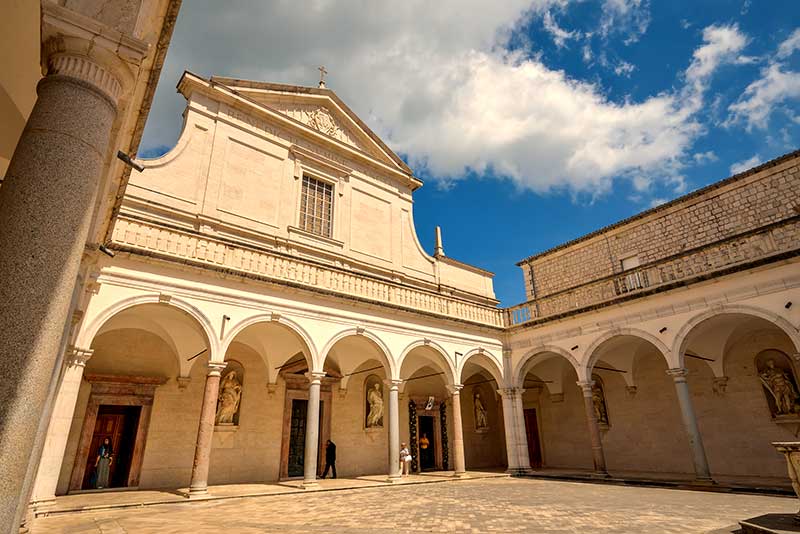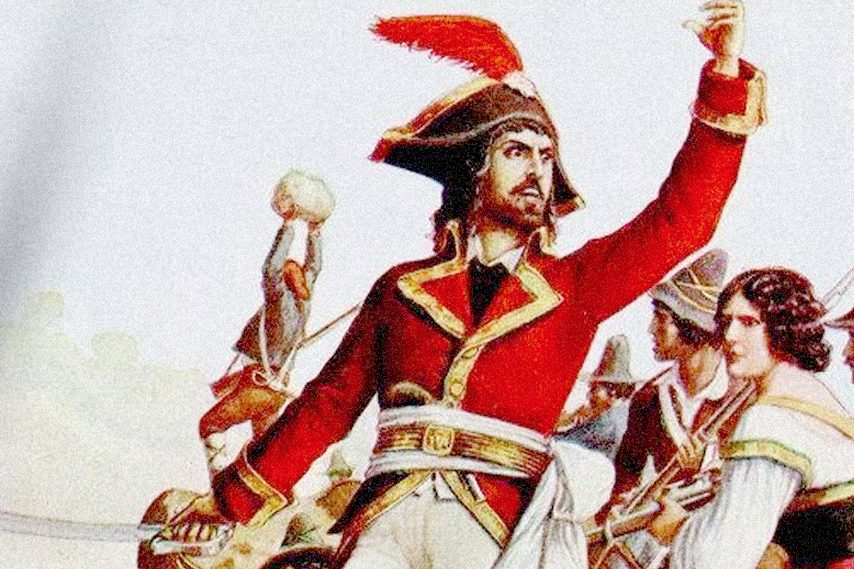Calling someone a “Renaissance man” is quite a compliment, even if occasionally misused and misunderstood in our times. Fortunately, one of the world’s great autobiographies paints a clear picture of the expression by one who embodied it.
Benvenuto Cellini was born in Florence in 1500, the second child of Giovanni and Maria Cellini. His father was so pleased that he exclaimed, “He is most welcome!” and hence gave him the rather unusual name of Benvenuto, Italian for welcome. Supposedly at an early age he saw the salamander in the fireplace, not the amphibian, but alchemical one which played a part in turning lead into gold. Be that as it may, he had a strong interest in goldsmithing, despite following in the footsteps of his father as an accomplished musician. Starting at age fifteen, he was apprenticed to and worked for goldsmiths in Florence, Siena, Pisa and Bologna, and soon mastered the craft.
In 1519 he went to Rome and created medallions, jewelry and various objets d’art for bishops, nobles and other prominent patrons. He attracted the attention of Pope Clement VII who appointed him a court musician.
The Renaissance was at its peak and was spreading to the rest of Europe, aided by such masters as Leonardo da Vinci himself who traveled abroad to work for kings and emperors. Artists, scholars, physicians and others poured into Italy to study under them and at the universities. Unfortunately, they were not the only ones. For centuries Italian merchants, traders and bankers had dominated the commerce and finances of Europe. Wealthy, but divided into numerous rival small states, Italy was no match for the invading hordes which began pouring in starting in 1496.
In 1527 an army of Spaniards, Germans and some Italians lead by the Duke of Bourbon and the Prince of Orange attacked Rome. Seriously outnumbered, the Pope and his surviving troops took refuge in the Castel Sant’Angelo. Cellini, an expert marksman, shot and killed the two enemy leaders. In charge of the artillery, he was able to successfully defend the refuge, but the rest of the city was not so lucky. The Sack of Rome, an orgy of rape, plunder and atrocities, remains one of the worst crimes in human history.
Following the siege, he worked in Florence and Mantua, returning to Rome in 1529, where among other projects he made the dies for coins struck by the Papal mint. He soon became involved in a vendetta, and killed a man who had mortally wounded his brother, Cecchino. He fled to Naples, was eventually pardoned, and returned to Rome, where he was responsible for several other killings. This was an unsavory, but unfortunate fact of life of the times, when justice was often uncertain at best, and people thus took matters into their own hands.
In 1534, to escape the plots of his enemies, he returned to Florence, and thence to Venice and France, going back to Rome in 1537. He was falsely accused of stealing some jewels and imprisoned, ironically in the Castel Sant’Angelo. He escaped, breaking his leg in the process, was captured, poisoned, but survived thanks to the fact that the person given a diamond to grind for it substituted another gem which passed through his system. He was freed by the intercession of some powerful friends, and then went to France where he worked for five years for the King, Francis I.
Returning to Florence, he used his engineering skills to strengthen the fortifications during a war with Siena, created a variety of masterpieces, was appointed to the Academy of Arts, and commissioned by Duke Cosimo de Medici to make a statue of Perseus, which would come to be one of the defining masterpieces of world art.
The detailed account of its casting in bronze is found in his autobiography, and is one of only two descriptions of the process from the time. Standard alloys of metal did not really exist then, and making it out of one single piece displayed both an advanced knowledge of metallurgy and sheer audacity.
Properly pouring the bronze, irregular cooling and a host of other problems had to be dealt with on the spot. At one point he realized he was a bit short of metal, and sent his apprentices scurrying throughout the neighborhood to buy anything made out of bronze so he could complete the statue.
It was unveiled in the Piazza della Signoria in 1554 to the universal acclaim of an awestruck public, a rival to Michelangelo’s David, Donatello’s Judith and Holofernes, and Bandinelli’s Hercules and Cacus. In the twentieth century the originals of all four were removed to the safety of museums; exact replicas now stand in the Piazza.
He continued to create jewelry, smaller sculptures, paintings, medallions and other works, yet somehow found time to write his autobiography. While sometimes criticized for making himself the hero of all his stories, and an occasional tall tale, such as claiming to have participated in a magical ceremony in the Coliseum in which the entire place filled with devils, it is acknowledged as one of the great masterpieces of the genre, well written, entertaining and quite informative.
He knew all the great people of his age, tells firsthand accounts of some of the important events of history, and gives valuable information about the entire artistic experience, from the commission of the work through the creation and the feelings of the maker. Reading it, one knows what it means to truly be a Renaissance man, and Benvenuto Cellini was one of the greatest.






























